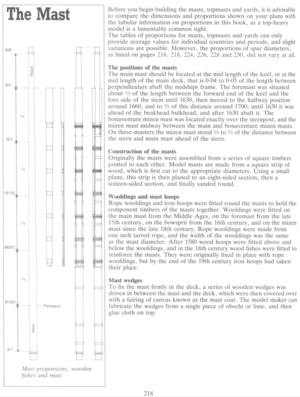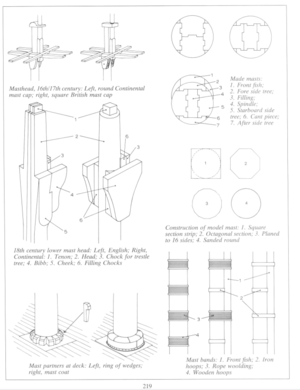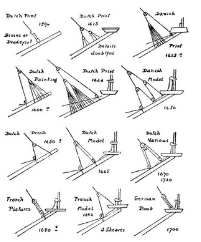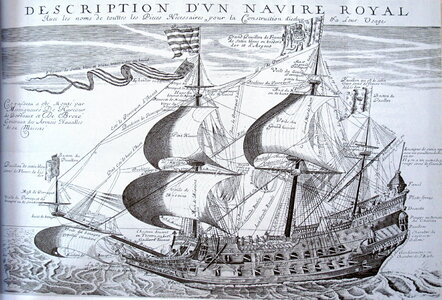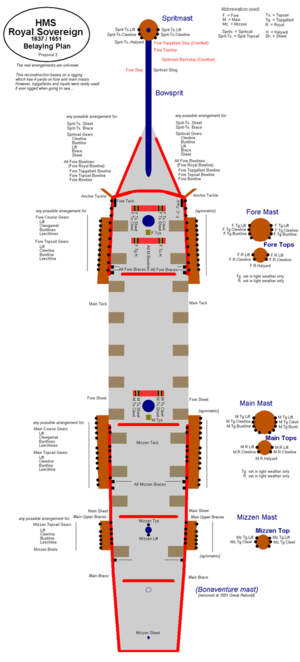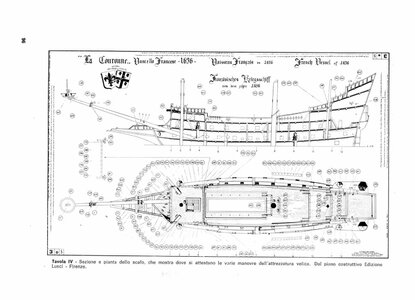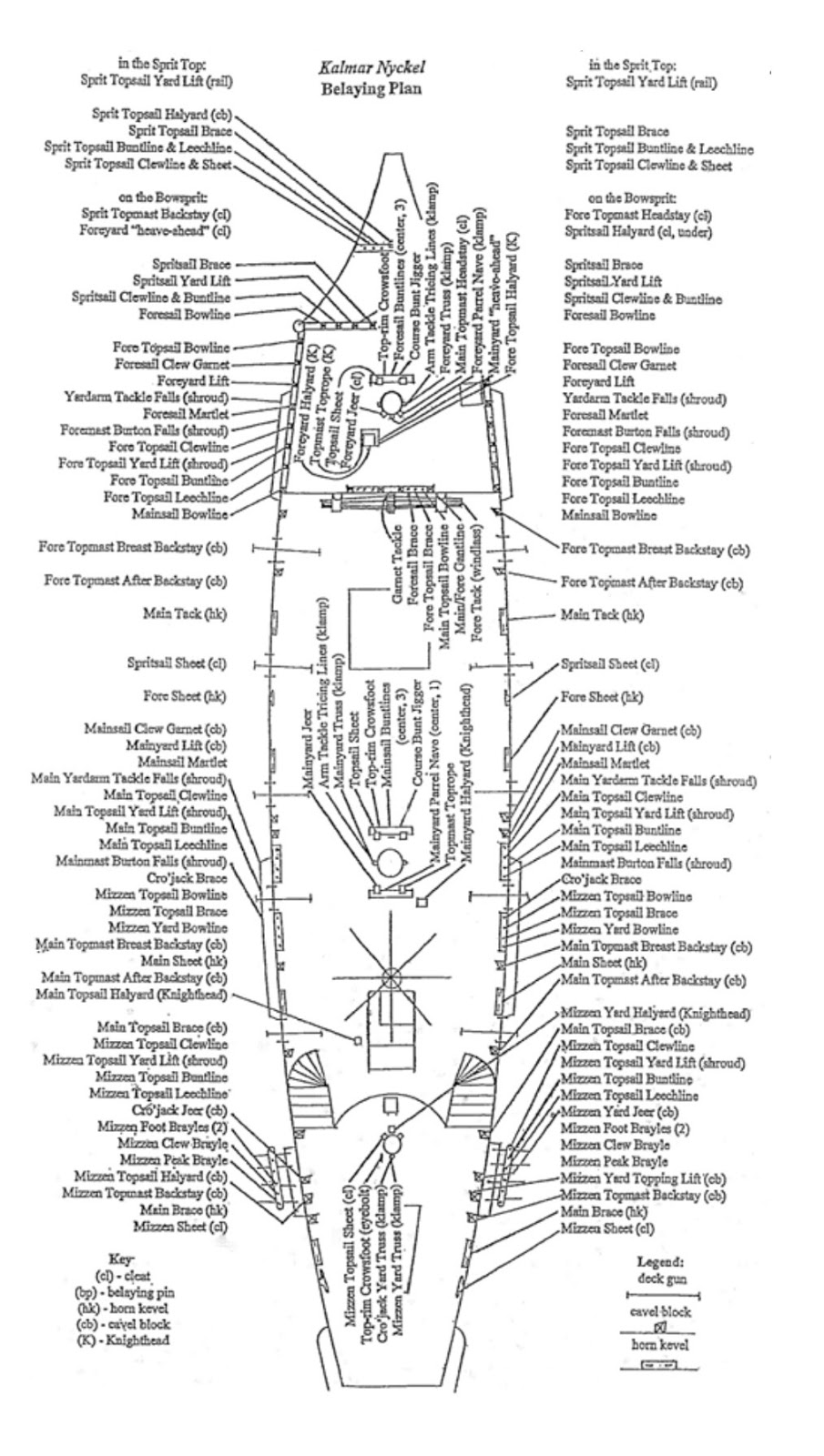Research your rigging, Paul, using books on rigging. Don't be afraid to add lines that are missing from the instructions. You may find some of the lines are incorrect for the time period (like I said... read books). Some lines on the instructions may not make sense because, although they may be in the correct position, they may not be rigged correctly.
Example: The nave line is a line that tightens the parrel which holds the yard arm to the mast. We are talking about the main course sail yardarms for both the main and foremasts. It runs along from the parrel down to the deck along the front of the mast, and at the bottom, attached to the deck, there is a tackle that draws the line tight. On the Corel instructions, the drawing just showed a line running from the yardarm to the deck, with that tackle just above the deck. It got me thinking, why would they want a line that pulls the yardarm DOWN? The drawing did not show any detail that would give you a clue what that line was for.
So don't trust the kit drawings or instructions 100%. The model may be based on some historical sources, but your own research on where the lines go and how they are arranged should win every time. Before you rig, buy RC Anderson's book. It is the Bible on rigging for ships of our favorite time period. It talks mostly about English riggings styles, contrasts this with Dutch styles, which are probably very similar to Swedish rigging, since the Dutch dominated ship design on the continent at the time. If you have any direct source information on rigging from the real ship itself, use it. Otherwise, read up on Dutch rigging in the book and compare it to the instructions. If you have questions, ask the forum as usual. There are plenty of Wasa builders who may be able to answer questions on specific lines. When something is unknown, use Dutch rigging style. This also goes for French ships, because practically all of the warships France obtained, with exception of
La Couronne and later ships, were purchased directly from the Dutch. I have read RC Anderson cover to cover at least a dozen times, so if you have questions, I can probably provide the answers, since I have already rigged one man of war from top to bottom and added at least 15% more rigging than the kit called for based on research. One thing that was a challenge was learning all the new terminology! I am still a amateur in this regard, but can help you learn the basic terms and functions of all the lines. If you are venturing so far off the instructions that you don't know what order to rig, I can help with that too. There is a general order to rigging a ship that will allow you to figure out when to run certain lines without forgetting some of them or cutting yourself off from easy access to belaying points.
BUY THIS.
BUY IT NOW! <---Amazon Link $16.95
This is for 18th century models, but most of the lines are similar. This provides 3-D pictures of each type of line showing you its purpose. Useful for learning and helping you memorize terminology. Buy it used on eBay to save money, or new for $65.00 on Amazon.
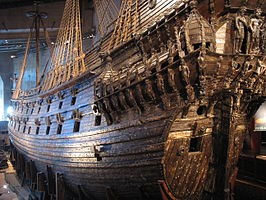
www.modelbouwtekeningen.nl






 ). As the DeAg plans are less than helpful if one wants to honor 17th century rigging practices (I do) I'll need to turn elsewhere and these books appear to be my go-to source. I have some line drawings from the museum but it's hard for me to see how they are helpful (to a beginner it just looks like a spider's web).
). As the DeAg plans are less than helpful if one wants to honor 17th century rigging practices (I do) I'll need to turn elsewhere and these books appear to be my go-to source. I have some line drawings from the museum but it's hard for me to see how they are helpful (to a beginner it just looks like a spider's web).